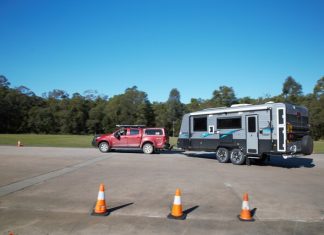By Oliver Lees
Sunbury’s emergency services were kept busy once again last week as heavy rain and hail battered the area.
In the 24 hours prior to midday last Thursday, the Sunbury unit of the State Emergency Service (SES) responded to a total of 54 calls for help in the area.
SES Sunbury crew member Jarrod Bell said it had proven to be another hectic day in a record-breaking year for emergency services in Victoria.
But unlike the extreme winds that tore down trees in October, Mr Bell said this time his unit was assisting those dealing with flooding.
“There were something like 20 flood rescues happening across Melbourne simultaneously,” Mr Bell said.
“By and large the calls we attended to were responding to flash flooding and building damage from the significant hail across the area.
“I would say the hail was, on average, the size of a large marble, or two to three centimetres [in diameter].”
The unit also assisted in operations further afield, including three flood rescue operations in Broadmeadows, Essendon and Brunswick..
Mr Bell said that no one requesting assistance had required medical attention.
The harsh downpour came just days after Australia recorded its wettest November on record.
According to the Bureau of Meteorology (BOM), Australia’s new November average rainfall record is 72 millimetres, more than double the November national average of 32 millimetres. November also marked the conclusion of Australia’s wettest spring since 2010.
Mr Bell said it was imperative that individuals prepared appropriately for a wetter-than-average summer.
“In terms of preparation, making sure all drainage is clear of obstructions in the spring and early summer is really important,” he said.
“People seem to have this feeling that they can always risk it, which then puts themselves, their families, and ultimately emergency services members at risk.
“Many people have a fire plan, but we really encourage people to have storm and home emergency plans that cover more broadly those risks to themselves and their families.”
“People can really do their bit — prevention of a call is always better than an actual call for assistance.”







